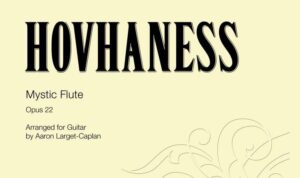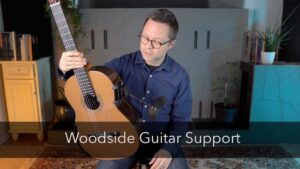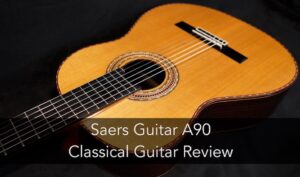Review: Cordoba C10 Parlor Classical Guitar
Cordoba ‘Luthier Series’ Line of Guitars
Solid Canadian cedar top
Solid Indian Rosewood back & sides
Indian rosewood binding / Indian rosewood bridge
7/8 body size, 50mm nut width
mother-of-pearl weave rosette
630 mm scale length
Price range from $1000-$1300 USD (via Amazon 2016)
Buy from Amazon.com for the best price (I did): Cordoba C10 Parlor Guitar
Canadians go here.
Bradford’s Opinion at a Glance
- Above average volume from what I expected
- Better than average tone for a mid-range factory guitar. A more rich and sustained sound compared to the C9 parlor. The upgrade is worth it in my opinion.
- Love the small body size but it is indeed small. I’m short so its good for me…
- The nut/string spacing is also small (think crossover guitars) but good for me as I have small hands. As a classical guitarist I would have liked a slightly larger profile neck but then again it’s great to have the option of going this small and I didn’t play anything where it interfered or cramped me, in fact, it just made it easier. Purist classical guitarists might not dig it but I do. Main point: it’s smaller than what luthiers generally call small-scale guitars (mostly in terms of body size and neck profile).
- If you think you need a small guitar this will really make a difference
- You can’t compare it to luthier made guitars in the +$6000 range but for the price I’m impressed and would happily recommend it to my smaller sized students or those looking for a smaller guitar.
Cordoba’s Promotional Blurb:
The Cordoba C10 Parlor is ideal for the player looking for the feel, comfort, and ease of playability that a smaller instrument provides, while retaining the sweet, warm tone created by all-solid wood construction. Built with either a solid Canadian cedar or solid European spruce top with solid Indian rosewood back and sides, the C10 Parlor features a 7/8 body size, 50mm nut width, and the fan bracing pattern found on most Cordoba guitars. This bracing pattern gives the center of the soundboard more surface area to vibrate and respond to the tension of the strings. A more responsive soundboard makes the guitar louder, and provides better tone.
Like every guitar in the Luthier series, the C10 Parlor is built with Spanish heel construction, where the top of the guitar is attached to the neck, the sides are added next, and the guitar’s body is sealed by the installation of the back. This construction technique allows the entire instrument to vibrate as one unified piece.
Aesthetic touches like the mother-of-pearl weave rosette inspired by a 1920’s Domingo Esteso guitar add a touch of vintage elegance to this best-seller. Other premium features include an ebony fingerboard, rosewood bridge, high gloss finish, and Savarez Cristal Corum strings. The C10 Parlor includes Cordoba’s lightweight polyfoam case.
Specs via the Cordoba Website
- Top Solid European spruce or solid Canadian cedar
- Back & Sides Solid Indian rosewood
- Binding/Bridge Indian rosewood binding/Indian rosewood bridge
- Purfling/Inlay 6 ply colored wood top purfling, 3 ply maple and ebony back and side purfling
- Rosette Pearloid and ebony “Esteso” weave
- Finish High Gloss PU
- Neck/Fingerboard Mahogany neck / Ebony fingerboard / Traditional (Classical) Style Neck
- Truss Rod Two-way adjustable, 4mm
- Scale Length 630mm (24.8″)
- Nut Width 50mm (1.96″)
- String Spacing at Saddle 57mm
- Fret Marker Inlays Pearloid at 5, 7, 9
- Nut/Saddle Bone
- Number of Frets 12 to body, 19 total
- Bracing/Build Spanish heel neck joint, Fan Bracing
- Body Width & Length 271mm (10.6″) at upper bout / 365mm (14.4″) at lower bout/ 480mm (18.875″) body length
- Overall Length 38″
- Body Depth 92mm (3.6″) at upper bout / 94mm (3.7″) at lower bout
- Tuning Machines Cordoba Premium Gold Tuning Machines
- Case Cordoba Polyfoam Case
My Cordoba Guitar Reviews So Far:





I am relatively new to classical guitar, but not new to music in general. I am soon to be starting your grade 3 level and considering the Córdoba C10 cedar top, but I’m not sure if the parlor model is right for me or not. I am tall with long fingers if that helps any. Is there a more precise way of measuring or knowing if this size or more appropriate for me?
I recommend you get the full size unless you are generally small. The sound is a bit better and the extra spacing is probably for the best. If you can get to a store to try one out is even better though.
Hello! Thank you for posting this. I wanted to reach out and ask which is more important for small hands- the nut width or scale length? It seems that with classical guitars, if I choose a smaller scale length of 630 mm, I have a 50 mm nut width, but if I choose a 48 mm nut width, I only find a 650 mm scale length. For reference, I am 5 ft tall and had to purchase a custom built acoustic guitar. I am starting classical guitar for college, and was thinking the smaller scale length would be more important than the nut width, and that the added small body of the parlor would make classical guitar positioning easier for me (I have lower back/hip pain, so I am assuming the smaller body of the parlor will be easier in the classical position?).
Furthermore, I was looking at the c10 parlor cedar top because I thought it would have a better sound quality than the c9 parlor cedar (I had originally purchased a c9 crossover but my classical teacher’s opinion was that they don’t have the best sound quality compared to regular c9 and c10). Do you recommend cedar over spruce? I’m entering college for music, and also read spruce can be a bit more finicky with humidity changes, and I won’t have much control over that in general….
Any thoughts/help with this would be much appreciated!
If you are in a post-secondary program for classical guitar I would stick to regular string spacing but maybe get a smaller scale length. At more advanced levels you might need the spacing for the complexity of the work. I mean, you can make anything work but that is my personal experience. The parlor might not be for you, you might want to look at actual small scale instruments by luthiers (I know, the price is steep). That said, talk with your teacher, they will be the opinion that matters in your case.
Hi
First I must thank you for your web and video on youtube. It is very good and give more information about learning classcal guitar. I just learn classical guitar for 2 months.
I have full size guitar 650mm scale and 52mm nut. I am 5ft7 and my hand can stetch thumb to pinky 8”4 inch (first time before I practices guitar it can stretch only 8”). I still feel hard to press string close to the fret by ring and pinky. I don’t know It will better or should I find some small scale guitar. It hard to find 7/8 scale On my county, must order it. Does cordoba parlor match to me?
Thank you
Suradech
Most people can easily play a full sized classical guitar, the majority of traditional repertoire does not require much in terms of stretches. Usually it is more of a technique/positioning and relaxation issue. That said, if you can go try out some smaller instruments you’ll be able to feel some slight ease.
Thank you
Hi
Do you have string spacing information at nut and saddle. There are no these information on official web and many page show different.
Thank you
Suradech
No I don’t as I no longer have the instrument. Their website states:
Scale Length: 630mm (24.8″)
Nut Width: 50mm (2″)
I’m considering C9 Parlor or C10 Parlor (both with cedar top),
Asthetically, I like the C9 (with mahogony) much much more than C10 (with rosewood).
Do you think the sound of C10 is noticeably better than C9, that I should get the C10 instead?
Thanks for helping!
I think it’s a noticeable difference between the C9 and C10. The Rosewood sounds more clear and resonant and more like a traditional classical guitar. That said, the mahogany has a woody sound that I like as well. If you can afford the C10 I say get it for sure but it’s kind of a matter of personal preference.
Thanks for your advice!
My adult daughter (tall but with small hands & short fingers) is most interested in intermediate level classical/church music (i.e. Bach: Ave Maria, Jesu, Sleepers Awake; Beethoven Olde to Joy; Amazing Grace, Scarborough Fair, primarily finger style etc) and wants a very soft peaceful “heavenly” sound in a church/chapel setting or with family and friends at home. We are looking at the C9 Parlor & C10 Parlor Guitars (did not like the C9 crossover); which do you think would be best (or would recommend a different guitar) and would the cedar top be better than the spruce top? Any suggestions/recommendations you can give us would be greatly appreciated. Thank you so much for your excellent videos and for all of your help. I hope you enjoy the rest of your day!
Yes, the C10 parlor sounds like a good match. The cedar tops are a bit louder and fuller but the spruce tops have a more pure sound which might be good.
Thank you so much for your response. Would the pure sound of the C10 parlor spruce top be better for faster music and the C10 Parlor cedar top better for slower music? In your opinion, would the cedar top or the spruce top be best for us with regard to the slower peaceful finger style classical/church music and settings as listed above. If possible, please let us know what strings/tension etc would be best in our situation. Thank you so much for all of your help.
For most students I recommend the Cedar top for a the extra volume and forgiving full sound. Just some nice nylon strings at normal or hard tension would be fine.
Hi Bradford. Since you liked the Cordoba parlor guitars I was wondering what you think about the C10/C9 crossover guitars for classical (or other genres). I am also a small person. Thanks Mike.
I haven’t tried any of the crossovers so can’t really comment.
What about 48mm nut width guitars in general, any experience with them? Thanks, Mike
It’s hard to tell if it’s the neck profile or the 48mm, both are small on the Cordoba…